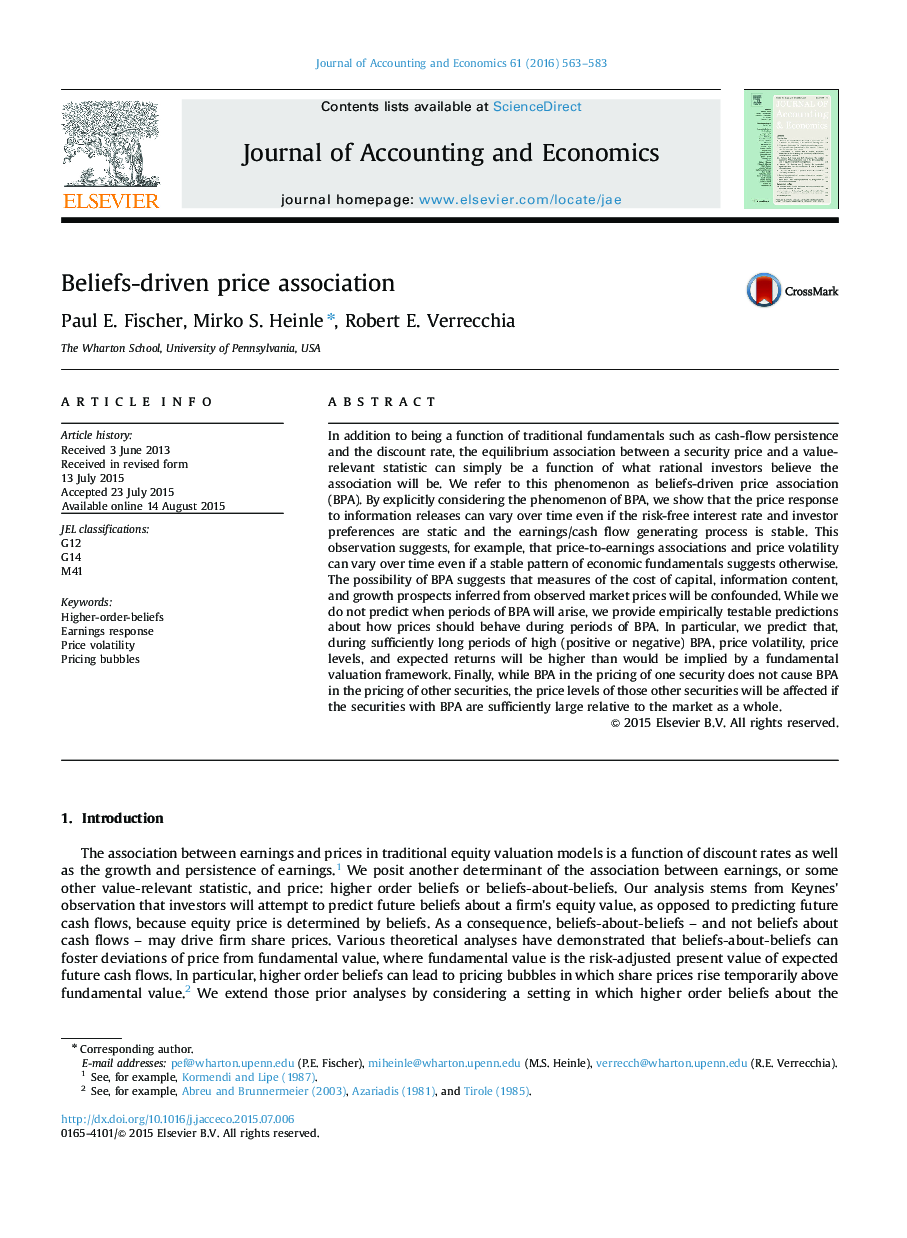| Article ID | Journal | Published Year | Pages | File Type |
|---|---|---|---|---|
| 5086548 | Journal of Accounting and Economics | 2016 | 21 Pages |
In addition to being a function of traditional fundamentals such as cash-flow persistence and the discount rate, the equilibrium association between a security price and a value-relevant statistic can simply be a function of what rational investors believe the association will be. We refer to this phenomenon as beliefs-driven price association (BPA). By explicitly considering the phenomenon of BPA, we show that the price response to information releases can vary over time even if the risk-free interest rate and investor preferences are static and the earnings/cash flow generating process is stable. This observation suggests, for example, that price-to-earnings associations and price volatility can vary over time even if a stable pattern of economic fundamentals suggests otherwise. The possibility of BPA suggests that measures of the cost of capital, information content, and growth prospects inferred from observed market prices will be confounded. While we do not predict when periods of BPA will arise, we provide empirically testable predictions about how prices should behave during periods of BPA. In particular, we predict that, during sufficiently long periods of high (positive or negative) BPA, price volatility, price levels, and expected returns will be higher than would be implied by a fundamental valuation framework. Finally, while BPA in the pricing of one security does not cause BPA in the pricing of other securities, the price levels of those other securities will be affected if the securities with BPA are sufficiently large relative to the market as a whole.
